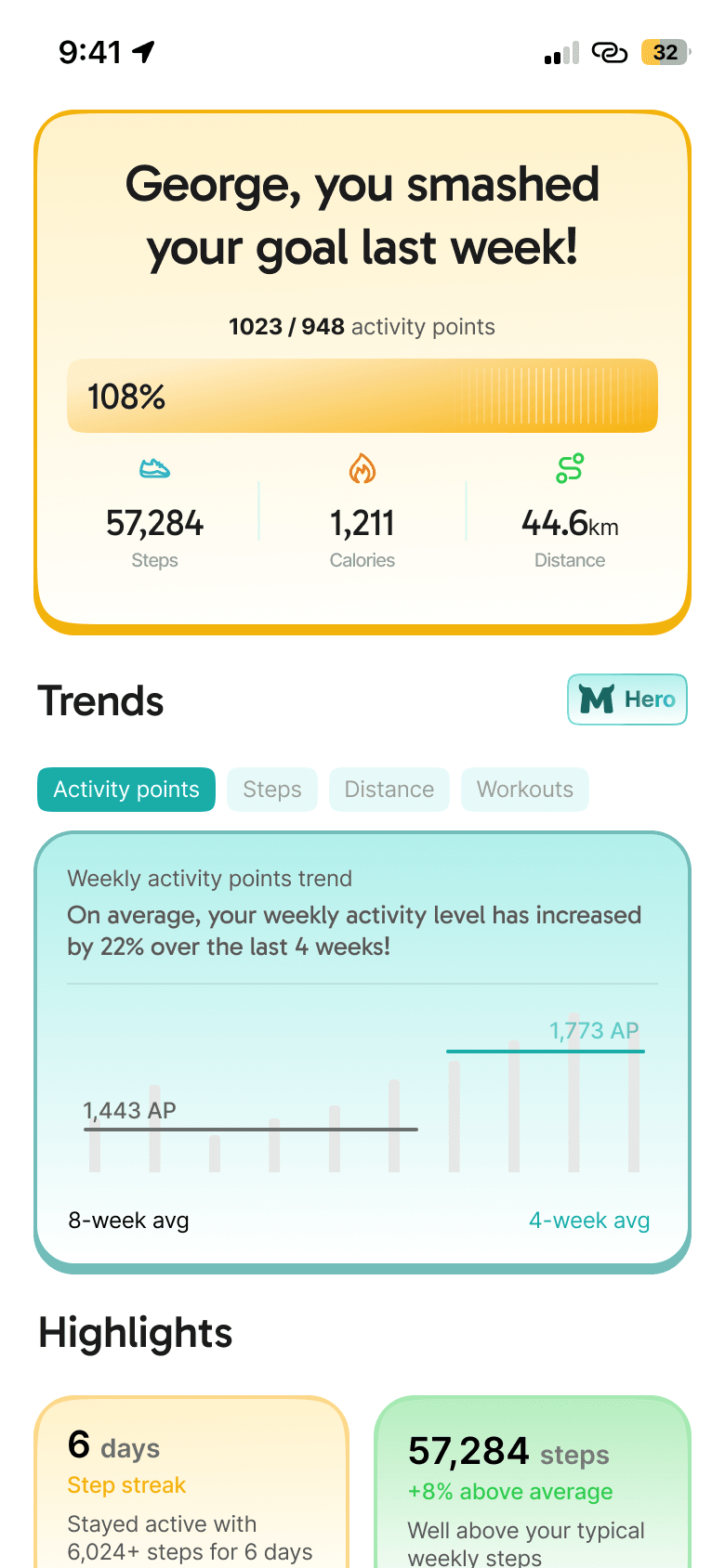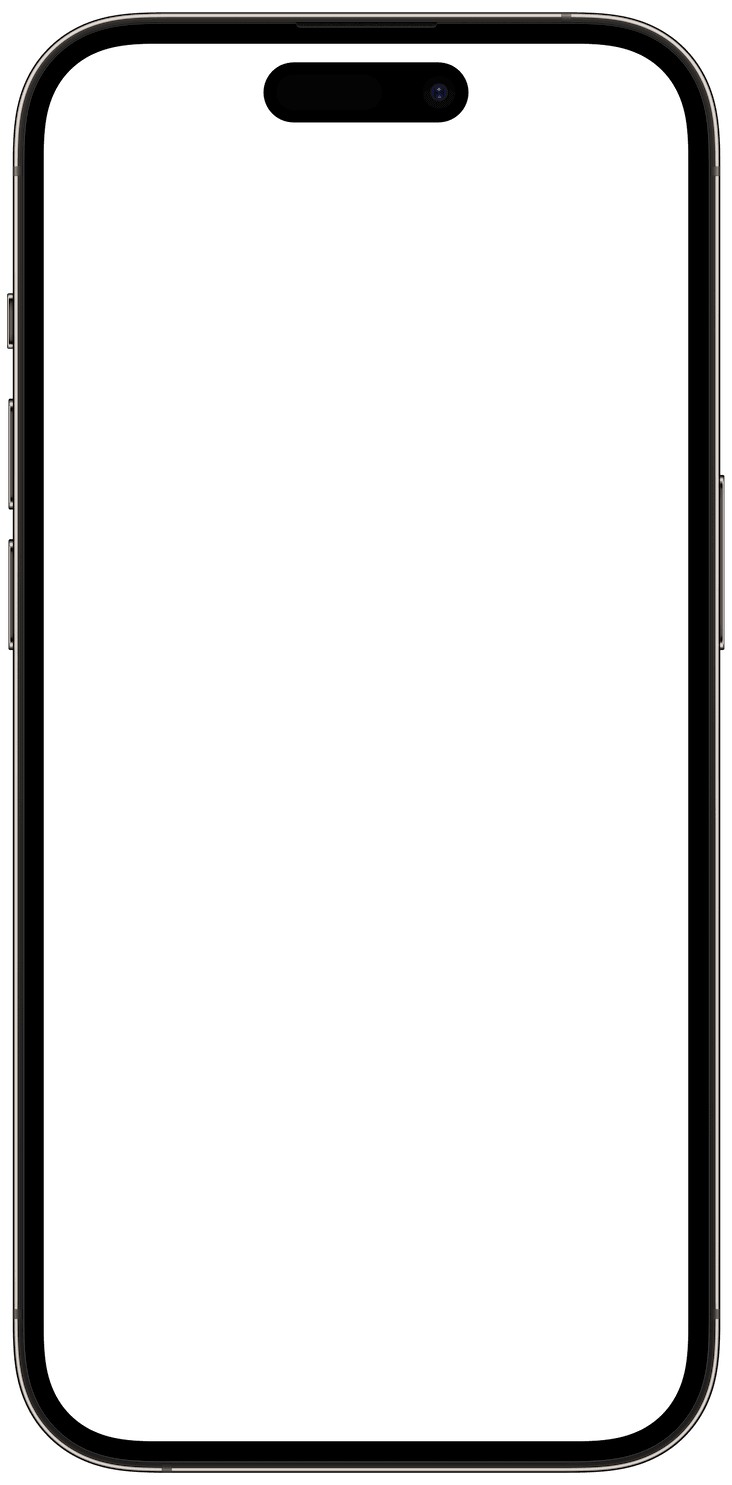The Counter-Intuitive Truth: Moving More Gives You MORE Energy
Stop waiting to 'have energy' to exercise. Discover how small amounts of daily movement create the sustainable energy you need for work, family, and everything you love.

Too Tired to Exercise, Too Sedentary to Have Energy
It's 3 PM. You're exhausted. The couch is calling. The last thing you want to do is move.
"I'll exercise when I have more energy," you tell yourself. But that energy never comes.
The Modern Energy Crisis
The Parent Trap: Chasing toddlers is exhausting, but it's crisis-mode
energy. You need sustainable energy that lasts through bedtime stories,
not just energy for emergency toddler sprints.
The Desk Drain: Eight hours at a computer. You've barely moved, yet
you're completely exhausted. Make it make sense.
The Age Excuse: "I'm just getting older." But your neighbor is 75 and
just hiked 10 miles. What's their secret?
The Caffeine Cycle: Coffee at 7 AM, 10 AM, 2 PM, 4 PM. Brief energy
spikes followed by deeper crashes. This isn't sustainable.
Here's What Nobody Tells You
You don't need energy to start moving. Movement CREATES energy.
It's the most backwards-sounding advice in fitness, but it's backed by decades of research. The hardest part isn't the exercise - it's believing this counter-intuitive truth.
How Movement Actually Creates Energy (Yes, Really)
The Mitochondria Magic
Remember high school biology? Mitochondria are the "powerhouses of the cell." Here's what they didn't tell you: regular movement literally creates MORE mitochondria.
More mitochondria = More energy factories in your cells = More actual energy for life.
The Research That Changes Everything
University of Georgia Study: Low-intensity exercise reduces fatigue by 65% and increases energy by 20% in sedentary people. That's better than most energy drinks - and it lasts.
The 10-Minute Miracle: Research shows just 10 minutes of movement boosts energy for up to 2 hours. Imagine what 30 minutes daily could do.
The Compound Effect: After 6 weeks of regular movement, people report:
-
40% more energy throughout the day
-
Better sleep (which creates more energy)
-
Less reliance on caffeine
-
Improved mood (perceived energy increases)
Why This Works for Everyone
For Parents: Energy to play with kids instead of just supervising from
the bench
For Grandparents: Stamina to keep up with grandkids and maintain
independence
For Office Workers: No more 3 PM crashes or coffee dependency
For Everyone: Energy for hobbies, relationships, and actually living
life
Start Small: Energy-Building Strategies That Actually Work
The Energy Paradox Solution
You need energy to exercise, but exercise gives you energy. Here's how to break this catch-22:
1. The Two-Minute Morning Energizer
Before coffee, do ANYTHING for 2 minutes. Stretch, dance, walk to the mailbox. This primes your energy systems for the entire day.
2. The Afternoon Antidote
When the 3 PM slump hits, don't reach for coffee. Take a 5-minute walk. Studies show it's more energizing than caffeine and lasts longer.
3. The Energy Investment Plan
Think of movement like compound interest:
-
Week 1: Force yourself to walk 10 minutes daily (feels hard)
-
Week 2: Same 10 minutes feels easier
-
Week 4: You have energy for 15 minutes
-
Week 8: You're naturally more active all day
4. The Grandparent Method
"My wife and I keep each other accountable. If she sees me sitting too long, she'll suggest a walk. Now we both have energy for the grandkids!" - John, 71
5. Match Movement to Energy Levels
-
Morning person? Front-load activity
-
Night owl? Evening walks work too
-
Unpredictable schedule? Micro-workouts throughout the day
6. The Social Energy Boost
Moving with others provides double benefits: the energy from movement PLUS the energy from social connection. Find your energy accountability partner.
7. Track Energy, Not Just Steps
Notice how you feel after movement. Most people are shocked that they have MORE energy after a walk than before. This awareness breaks the "too tired" mental block.
Build Sustainable Energy That Lasts (No Crashes)
The Difference Between Fake Energy and Real Energy
Fake Energy: Caffeine, sugar, energy drinks
-
Quick spike
-
Inevitable crash
-
Need more to maintain
-
Disrupts sleep (reducing tomorrow's energy)
Real Energy: Regular movement
-
Builds gradually
-
Lasts all day
-
Improves over time
-
Enhances sleep (increasing tomorrow's energy)
How Motion Helps You Build Real Energy
Start Where You Are: Motion's adaptive
goals meet you at YOUR energy level. No
overwhelming targets that drain you further, or leave you demotivated.
Gentle Accountability: Your Motmot needs
care, but won't shame you for low-energy days. They understand that
building energy takes time.
Celebrate Small Wins: Motion rewards consistency over intensity. Those
5-minute energy walks count just as much as gym sessions toward your
goals.
Energy-Building Community: Connect with others building energy
together. Share tips, celebrate energy wins, and support each other
through low-energy days.
Track What Matters: See your energy improvements over time. Watch as
your natural activity level increases without forcing it.
The Long Game: Energy for Life
This isn't about becoming a fitness fanatic. It's about having the energy to:
- Play with kids/grandkids without getting winded
- Pursue hobbies after work instead of crashing
- Travel and explore without exhaustion
- Maintain independence as you age
- Actually enjoy your life instead of just surviving it
Frequently asked questions
If you have anything else you want to ask, reach out to us.
How long before I feel more energetic from exercise?
Many people notice an energy boost immediately after movement. The University of Georgia study found significant energy improvements after 6 weeks of regular low-intensity exercise. Most people report noticeable daily energy improvements within 2-3 weeks.
What type of exercise gives the most energy?
Surprisingly, low to moderate intensity movement provides the best energy boost. Walking, yoga, swimming, or light cycling are more energizing than exhausting high-intensity workouts. Motion counts ALL movement toward your goals, so choose what feels good.
I'm exhausted after work. How do I find energy to move?
Start with just 2-5 minutes of gentle movement. This isn't about 'exercising' - it's about moving enough to trigger energy production. Most people find that after 5 minutes, they have energy to continue. If not, 5 minutes still counts!
Can fitness help with chronic fatigue?
While you should consult healthcare providers for medical conditions, research shows gentle, gradual movement often helps with fatigue-related conditions. Motion's adaptive system adjusts to your energy levels, never pushing too hard.
How is this different from just drinking more coffee?
Caffeine borrows energy from your future self (hence the crash). Movement creates NEW energy at the cellular level by increasing mitochondria. Plus, movement-based energy improves sleep, while caffeine disrupts it.
What if I have mobility limitations?
Any movement counts! Chair exercises, stretching, or gentle physical therapy movements all build energy. Motion's universal tracking counts whatever movement works for YOUR body.
Why do I feel MORE tired when I start exercising?
Initial fatigue is normal! Your body is adapting to new energy demands. This typically reverses after 1-2 weeks. Start smaller - if you're getting more tired, you might be doing too much too soon. Motion's goals adapt to prevent this.

